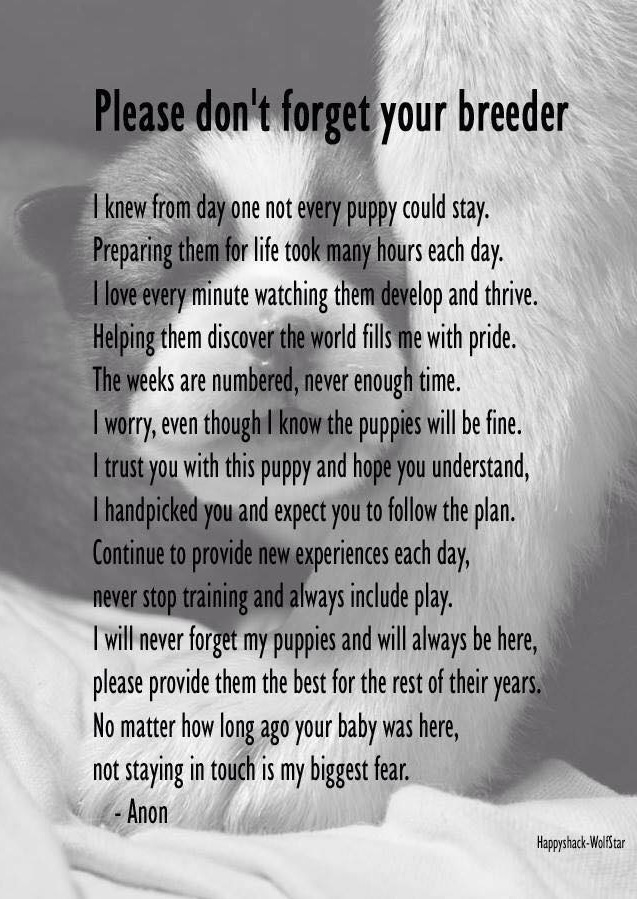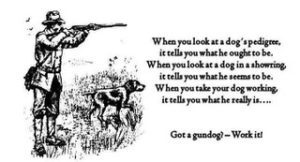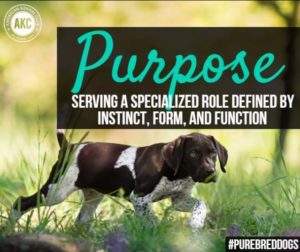March 29, 2020
So here we are into the third (?) week of self-isolation from the Chinese Coronavirus, COVID-19.
We are faring just fine here. Having already scoured and cleared the house of clutter for house showings, my only task is to keep my immediate workspace (the entire kitchen) in some kind of order, though house showings are not happening with this virus scare. Best to stay in the habit of just putting stuff away and refrain from buying any more books……
With The Husband working from home, it’s been easier to plan meals and I spent last week exercising my cooking skills. This week we worked on leftovers and trying to support the local restaurants.
I cannot comprehend the apparent boredom others complain about. There is always so much to do. Besides the housework, animal care and cooking I now have the time to actually read entire articles, even books, research, write, and maybe I’ll even tackle some artwork if I can find a place to do it. I do need to work on getting boxes packed, a slow, lonely job I’m easily distracted from.
What about the dogs??
Oh yes, were it not for the water-logged, spongy soft ground that is my yard, I would do more work with them outside. But there are things that can be taught indoors. Even field work!
With time to spare and complaints of boredom, now’s a good time to introduce yourself and your dogs to field work!
A lot of folks who do not do field work blame lack of time, place and $. Well, here you now have the time, you are home and can do some of this indoors, and it costs little to nothing! No birds required, either.
There are some simple, basic things every hunting dog should know in the interest of control and teamwork. Most of this begins with the relationship between owner and dog, which is enhanced by shared quality time and communication.
Communication and bonding is enhanced by training.
It doesn’t actually matter what it is you train your dog to do. Even simple manners around the house that allow the dog to respond to your wishes makes both dog and owner happier. Untrained dogs never have the peace of mind of knowing if what they are doing is acceptable, never mind pleasing to their owners. A well-trained dog knows what is expected of it and it is thus more confident as well as more reliable and easier and more fun to live with.
A well-trained dog can enjoy liberties that the untrained cannot.
So what about field work?
There are plenty of books on the market and information on the internet to help you learn what and how to train for whatever it is you want to teach. I recommend that anyone interested should look to these sources for additional information, don’t just take my advice. What I do works for me and you may come up with problems and questions I don’t address here.
What I am going to outline here is how I approach training from the confines of my house and yard. I’m not inclined to formal training for anything until I’m ready to refine it for competition. For anyone simply interested in trying their dogs in the field, this is adequate to start the process.
Lessons should be very short, just a few minutes, but frequent, not too repetitive, and always end on a good note, even if it means telling the dog to do something he already does well and rewarding for it. Lessons can happen anywhere, spontaneously as opportunity arises.
If you are getting impatient, end the lesson.
Lack of access to birds is the most frequent excuse I hear. Birds are necessary to first test instinct and build drive, and later to put all the trained elements together.
If a dog has good instinct and drive and the inherent skills to do the job, it doesn’t take much exposure. Even if you cannot access birds, live or dead, the dog still needs to learn control to be a partner on a hunt. Worst case scenario is that you do all this training first and then learn the dog is not birdy. Then what do you have? A well-controlled dog!
So, What do we need?
The tools needed to start basic field training are few.
-A buckle collar so you have something to hold on to if necessary
-A spaniel whistle (Acme plastic spaniel whistles can be had cheaply enough)
Blowing the whistle indoors is admittedly hard on the ears. Another option is to use a silent whistle, a great little tool for indoor training.

-Tennis balls if your dog has an affinity for them, otherwise whatever toys they like to pick up and carry around.
– If you want to use dummies, they can be easily purchased or they can be made by stuffing socks and tying or sewing them closed. If you want dummies that float, stuff in a bunch of the corks from those bottles of wine you’ve been polishing off the past few weeks. Box wine? Can’t help you there.
In the absence of birds, use treats and toys as a reward. Birdy dogs have little interest in treats when birds are being used.
There are some basics that all hunting dogs should know.
It first starts with a reliable recall.
It doesn’t matter the technique used to teach the recall if whatever way you do it works. But what ever way you teach it, the dog needs to understand it is not optional. Ever. Failure to comply requires correction. Even the best-trained dogs will try to ignore a recall under great temptation. A reliable recall may be your single biggest challenge if you have never demanded it or were inconsistent with it.
While teaching recall, you can also teach whistle commands.
Traditionally a toot-toot is a turn signal, and a single blast is a HUP.
But folks tend to use their own toot combination or sound for recalls. Pick something (a “toot-toot-toot-toot” for instance) and use it as a recall.
When I teach the whistle recall I first teach the verbal, then use a combination of the whistle following the verbal at first (eg., “toot, toot, toot, toot, COME!”), then dropping off the verbal and using only the whistle. I practice it several times a day as I work in the kitchen, whistling the dogs in and treating them when they reach me. I try to wait until they are sleeping or otherwise occupied to do this so as to get them used to interrupting whatever they are doing to respond. When the dog is responding great in the kitchen do it in other rooms of the house.
Once you have a rock-solid, come-running recall to the whistle anywhere indoors, take the lesson outdoors. Add challenges and only reward fast responses. Repeat, Repeat, Repeat!
HUP!
“HUP” is arguably the most important command after the recall to maintain control over the dog. You can get by without it, but in my experience it makes everything easier. We tend to think of it only for steadiness to wing and shot, but even if you never train to that level, it is still a very useful command to get the dog to stop what they are doing and pay attention. It can even be a life-saver.
“HUP” means STOP, SIT AND STAY! and to wait for further instruction. The whistle command is a single hard blast. Hand signal can vary but generally it’s palm out, fingers up, toward the dog as if to command to stop. Some trainers raise their arm for the HUP command. I choose not to do that as, being a short person, I sometimes have to raise my arm and wave for my dog to see me in the cover.
HUP is used to control unwanted behavior, to get the dog’s attention for further instruction, or any other time you want or need the dog to stay in control. It’s never too early to teach it. As a case in point, when Windy was only 5 months old, she was running on the beach with my cousin’s mixed breed, Sam, when a family with 3 dogs on leash came walking by. I called Windy to me and when she was about 10 feet from me I yelled HUP!! and put my hand up to reinforce the command. She did it. She was a WILD pup but had already thoroughly learned HUP. She sat calmly, one eye on me, the other on the three strange dogs I KNOW she wanted to rush up to meet. Sam, on the other hand, had to be coaxed in close enough to grab him, and then he lunged and lunged against his collar in the effort to break away. When the family was far enough away (about 5 minutes) I gave Windy the release (her name) and told her to stay close. Sam had to be leashed.
That’s the difference between a trained and untrained dog.
I don’t teach HUP as two commands but as one command. Like the sit-stay, you make the dog sit and stay in place for longer and longer periods and with more and more distraction as they master it. In the beginning, go to the dog and release, then reward. You can reward with treats or play. The release word from HUP is the dog’s name.
I start teaching this when they are pups just like a sit command, both with the verbal HUP and the single whistle. At mealtime I put the bowls down in the same place for each dog and each of my dogs is required to HUP and wait for their name to be called to be allowed to go to their bowl. I have had pups as young as 12 weeks do this. I was doing this when I had as many as 7 dogs living in the house. I rarely feed my dogs in their crates. Order is maintained at all times.
When the dog understands the meaning of HUP, use it when the dog is engaged in something else and insist on compliance. Like the recall, the dog needs to understand it is not optional. Don’t forget to reward good behavior! When you can get the dog to respond quickly, take it outside and start from scratch. Add distraction as the dog learns to do the right thing.
Once the dog has a reliable recall and a reliable retrieve you can add difficulty to the command. Have the dog “HUP” and wait for the release (his name) to fetch a thrown ball. Make the dog HUP in the yard as you throw treats or tennis balls just out of his reach. Then say his name to let him go get it. When the dog is returning from a retrieve, toss another tennis ball in the air to land about 20 ft from the dog, while yelling HUP! He should sit, but observe either you or the thrown tennis ball (and not drop the one he has in his mouth). Correct him if he drops the first ball and chases the second one. Always enforce the command. Then call him to you to complete the first retrieve, and immediately send him back to get the other ball. If you are training several dogs, they should be able to all HUP on command and calmly watch you throw a ball without chasing. Then pick a dog by name and let him make the retrieve. The others should stay in place and not break. Give every dog a turn while making the others stay and wait (you might need some assistance to maintain order at first). When you can stop the dog with a HUP whistle mid-chase on a ball or bird, congratulations! If you want to go all the way to teach steady to wing and shot you are almost there!
Teach the “turn” whistle
I accidently taught this to Karma and have used this technique intentionally since.
When running a quartering pattern we need the dog to run side to side in front of us to cover ground, 10 to 20 yards to each side. We wave the dog in the direction we want it to go (called “casting”). When the dog reaches the desired distance, a “toot-toot” may be needed to signal the dog that they’ve gone far enough and they need to change direction.
In my laziness, I started toot-tooting my dogs to come get scraps as I cooked, which naturally brought them all running. Basically I had turned it into a recall. Karma was a pup and learned very fast and was keenly observant. I let her run with her mother when I put Mia through her paces doing things like directional retrieves. At about 6 months of age I took Karma to a hunt test and at the end let her run in the empty field. I waved her to run to my right and was amazed that she did it! I toot-tooted and was equally amazed that she turned back toward me! Good Girl! I waved her to my left and she ran to my left. I toot-tooted her and she turned back to me. Cool!
At this point, there MUST be some payoff to keep the behavior going, so when I continued I threw her a dead bird to retrieve at each cast. At home without birds, tennis balls will suffice. I’ll explain more on that later.
So, there you have a painless way to teach the turn signal.
Then what?
Before any more training can be done, the dog needs to have a reliable retrieve.
I’m no authority on teaching retrieve. I am inclined to enhance and maintain retrieve behavior through play, most of which involves hitting a tennis ball in various challenging directions for the entire pack. They get competitive, which helps develop a quicker response. I insist on to-hand delivery. I do not allow my dogs to play “keep away” with the toys so if a bratty adolescent manages to get the ball and decides to test me, I turn my back on it, pull out another ball and play with the other dogs. A now-bewildered pup learns quickly that there is nothing to be gained by that behavior.
Occasionally a youngster will have enough of an independent streak to keep trying this stunt. When that happens we go to the hallway method and work one-on-one. To do this, pick a hallway in the house, or make a channel for the dog to run up and down where he cannot leave the area and has no choice but to either come to you directly or not come at all. I do use treats to reward but ONLY if the dog releases the ball on command to hand (“give”). Otherwise you will have the retrieve object spit out on the ground in anticipation of the reward. If the dog has nowhere to go but straight to you, you can reward and instill the desired behavior and gradually bring it back to a more open area to see how well the lessons stuck.
Some dogs are inclined to drop the ball (or bird or toy) before reaching the handler, particularly in the absence of other dogs. In this case the dog needs to learn the meaning of the word HOLD. Once they learn that, you can remind them to HOLD as they come to you and learn to wait for the “give” command.
I teach HOLD regardless of whether it’s needed, just as insurance. I just use repetition. Put the ball, toy, or dummy in the dog’s mouth and keep a hand under its chin so it keeps its head up and mouth shut. At first, say “Hold” and then immediately, “Give” and take the item out. Repeat. Gradually lengthen the amount of time the dog is made to hold the object. Reward and praise for the right behavior. The dog should eventually reach a point where it will not release the object until bidden to do so. At some point the dog will likely take the object from your hand in anticipation of the exercise. High praise for that! Gradually lower your hand with each HOLD command until the dog is taking it from floor level and you no longer need to be holding it. The final desired behavior is for you to indicate the ball/toy/dummy and say HOLD and the dog will pick it up and hold it until you put your hand on it and say “Give”.
There are force-training methods to teach/reinforce the HOLD, and these may be necessary in the case of a difficult dog or a dog with a hard mouth (squeezing the bird or mauling it) I would leave that to the pros.
Now with a dog who comes when called, sits and pays attention when you need him to, and has a solid, reliable retrieve, you can bring birds and guns into the picture and put the pieces together.



